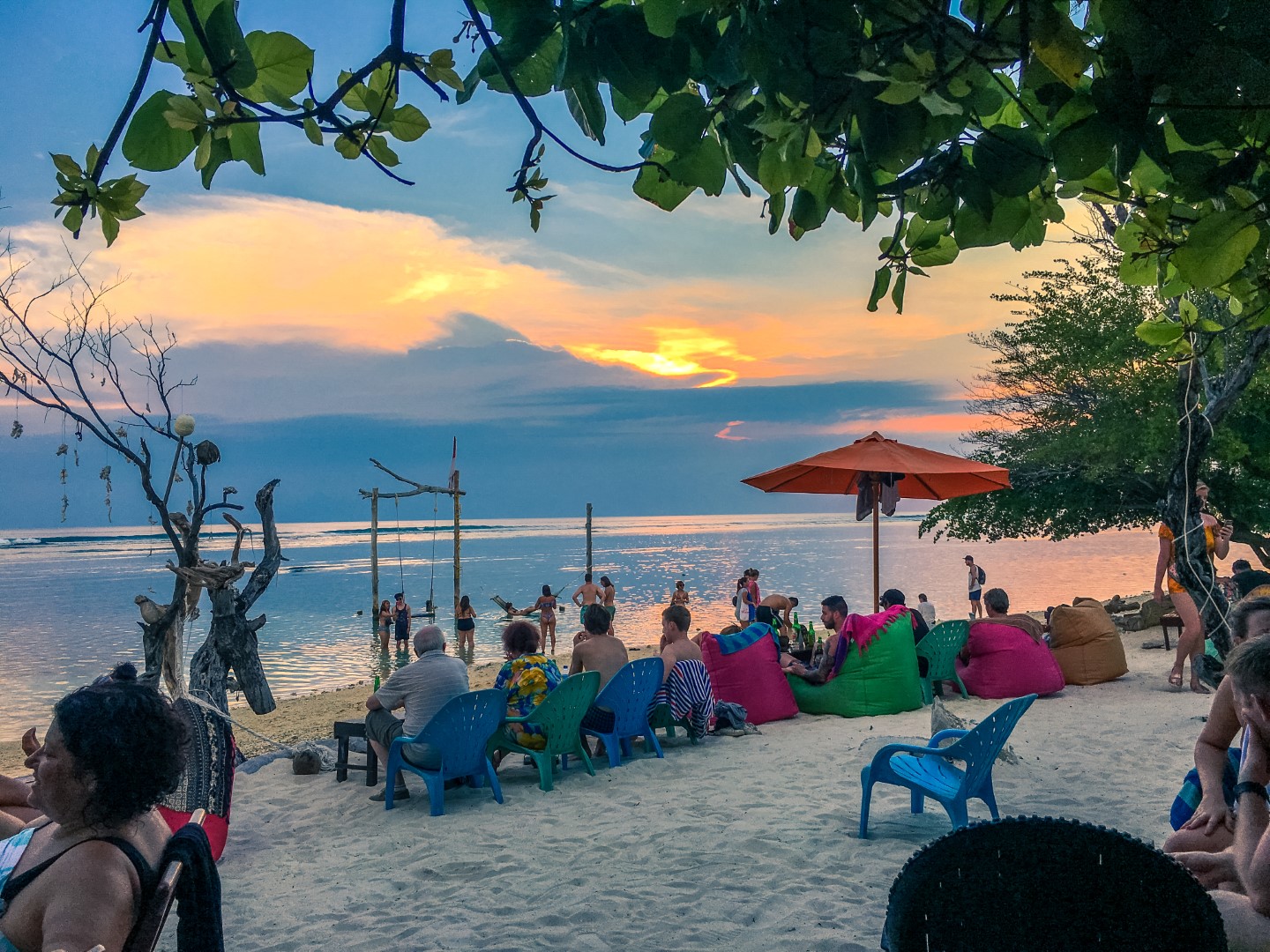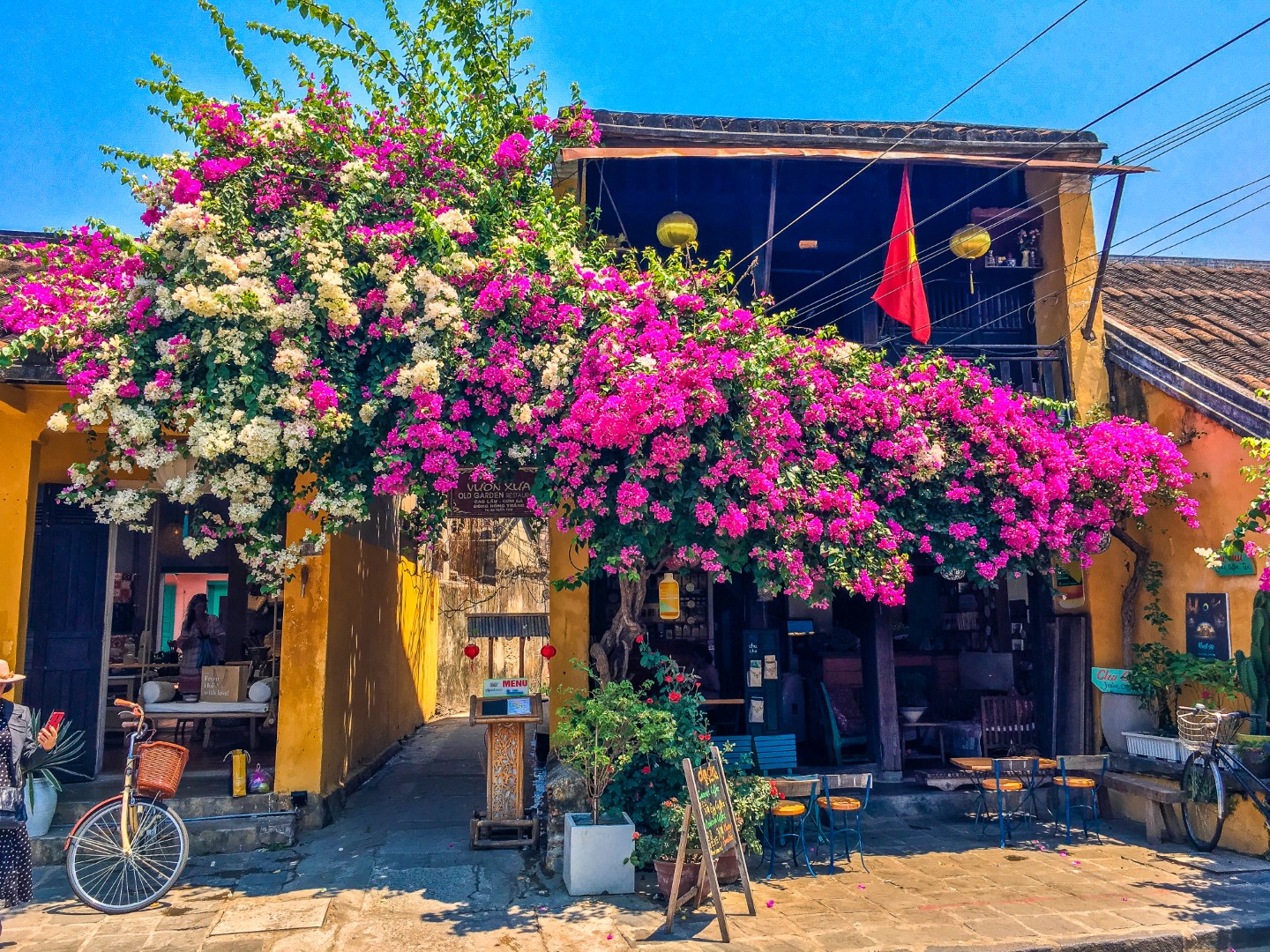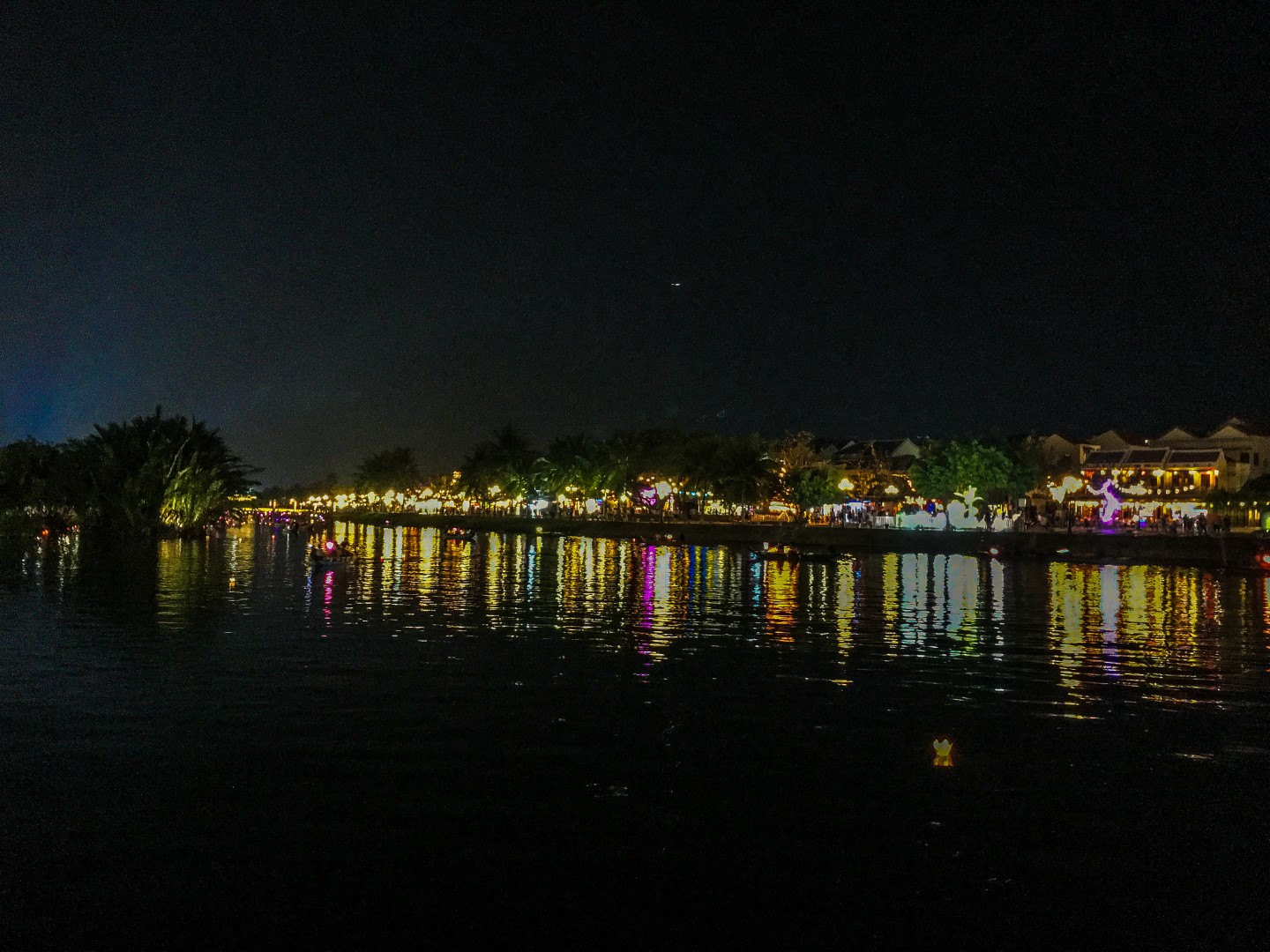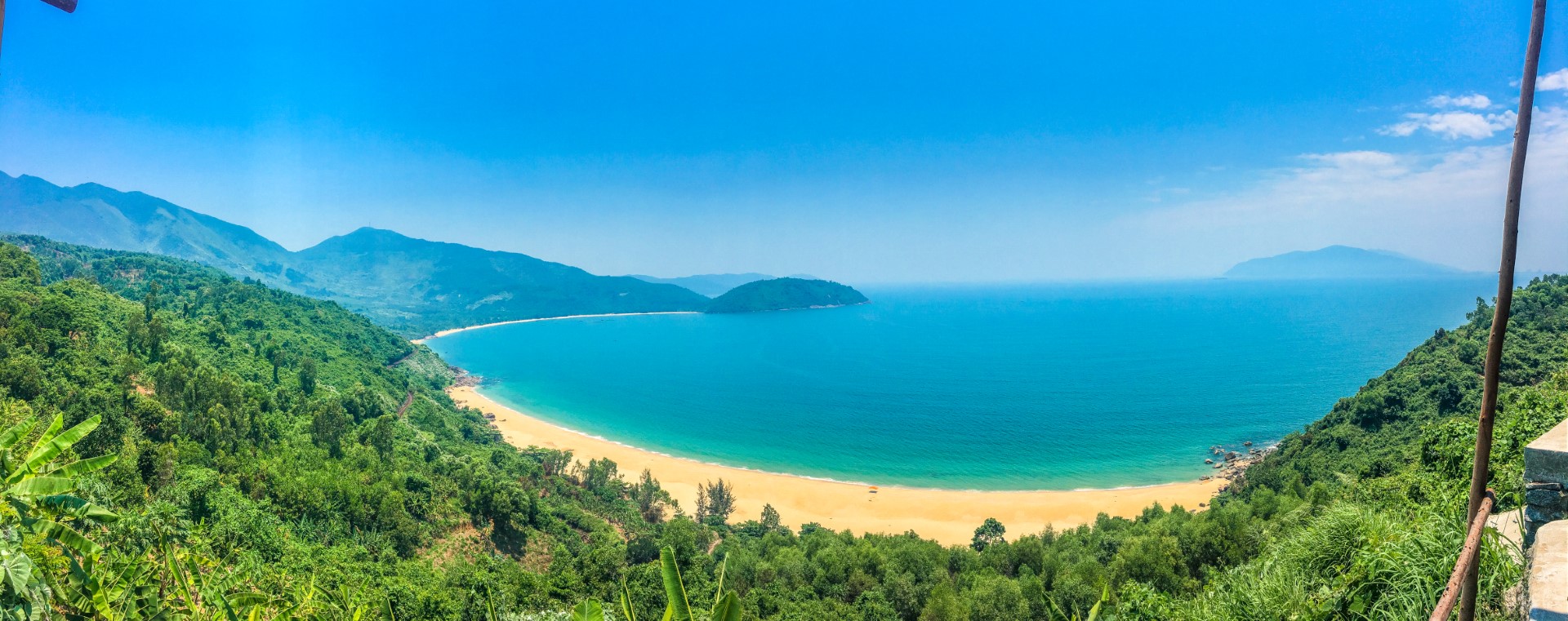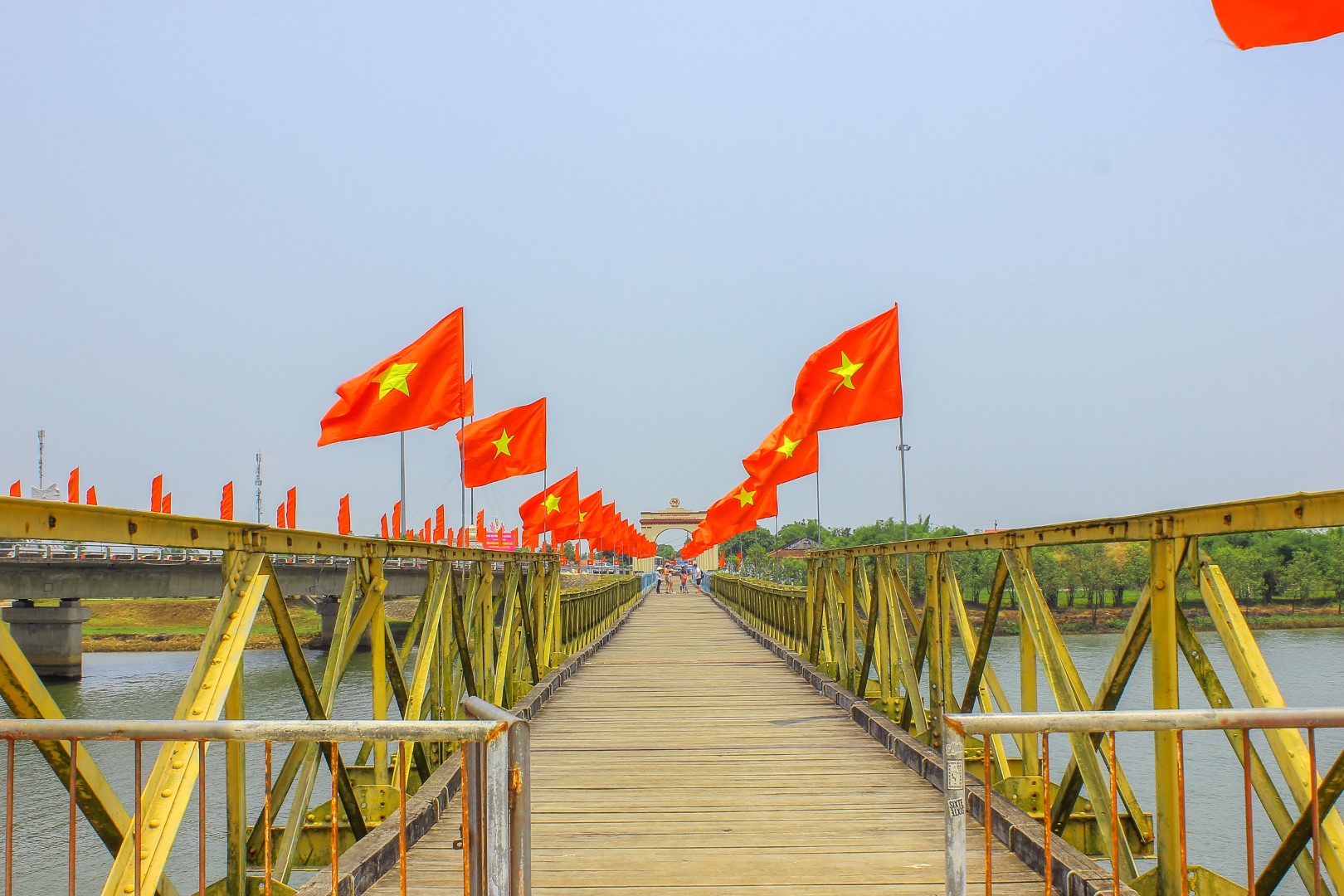Another day in this unbelievable country, another tour. In the words of Robin Williams as Adrian Cronauer, ‘time to rock it from the Delta to the DMZ’! Hue lies about 2 hours south of the area once known as the Demilitarised Zone, during the Vietnam War. We take another breakfast in the glorious courtyard of the grand old lady, Saigon Morin. Wonder how much it is to live here? I could get used to this breakfast by the tropical oasis garden business.
Traffic on the roads around Hue has swelled as we grow ever closer to the holiday period. We make tracks north toward Quang Tri, the higgledy piggledy city of Hue once again falling away. The scenery opened to jungle-like scrub, dotted with a smattering of towns. Cars and trucks whizz along the highway, motorbikes fly by with reckless abandon. Long hidden are the scars of years of war, and looking out the window, I struggle to imagine what the region would have looked like. Our driver explains that we will stop in Dong Ha, just north of the town of Quang Tri to pick up our tour guide for the day.
We pull over in Dong Ha, on a seemingly random corner. Our driver leaps out and opens the front passenger door. A tiny Vietnamese woman in a huge floppy hat, jeans and blue cotton shirt appears. She introduces herself as Hai, and passes a copied map to us in the backseat. She reels off facts about the base, the DMZ and gives us an overview of today’s itinerary. We are to continue heading north, to an invisible line in the sand, where the US Army built their base on the edge of the demilitarised zone.
As we leave Dong Ha, Hai relays her own story. She was only a small child when the war started, and didn’t really understand a lot of what was happening in the early days. Eventually, her family was forced to flee their village as the North Vietnamese Army advanced. “My parents walked for five days!” she says. “They carried me, but sometimes I had to walk too. We walked all the way to Dong Ha. Life was very hard, sometimes there was not a lot of food, and we were so tired”. She points to Dong Ha on the map. “We lived here in Dong Ha, until the war finished”. Hai spoke carefully, with a slight sadness that had become all too familiar to our ears.
As we weave along the highway through Quang Tri province, we come to a stop on the crest of a hill. From here, we look north to a green plain. Hai jumps out, indicating we should follow her. “Watch your step, please”. We step over a lump of rock and off the footpath into the scrub. Hai is wearing platform sandals, and carving her way through the rough undergrowth with impressive precision. Up the hill, across the ridge and a little hop over a culvert. Emerging from the green jungle is a pile of rusting metal, entirely unremarkable until Hai points out its a tank. Or what’s left of it. Hai tells us we are standing within the grounds of the Doc Mieu firebase. The junk pile was the remanants of an American tank, abandoned after the fall of Saigon. Nearby, a concrete sign. “The Eye of McNamara!” Hai gestures to the sign, which reads this is southern border of the Doc Mieu firebase, which was colloquially known as the Eye of McNamara. The tank has been stripped of all its parts, and is barely recognisable now. Husbando climbs atop to stick his head in and see what’s left inside. Nothing but weeds and grass now, apparently.

We push further north, to the Ben Hai River. Vietnam flags hang from every light post, flag pole, tall tree and house balcony. Enormous red signs, with yellow text come and go with increasing frequency along the road. There’s a watchtower on tall poles. We pull over into a gravel car park. Hai leaps out. “We are here! Bring your cameras!” she declares. There is furious work happening in the park adjacent the carpark. A stage has been erected, bunting flags strung from every available stick and branch. There’s more loud speakers than I can count. Men are busy running wires and lights from rigging on the stage. Reunification Day preparations were continuing here, full steam ahead. Hai points to the watch tower on the river bank. “You see this watch tower? See the speakers?” She points at the huge loud hailer speakers, some smashed and crumbling, mounted on the tower struts. “In the war, they play songs and music for South Vietnam across the river, very loud”. Like propaganda, I surmise, as we walk. Hai nods, watching us stare up at the tower. Try to imagine this tower in original condition during – it conjures faces peering out from the hut atop the spindly legs, watching eagerly and ear piercingly loud music clanging.
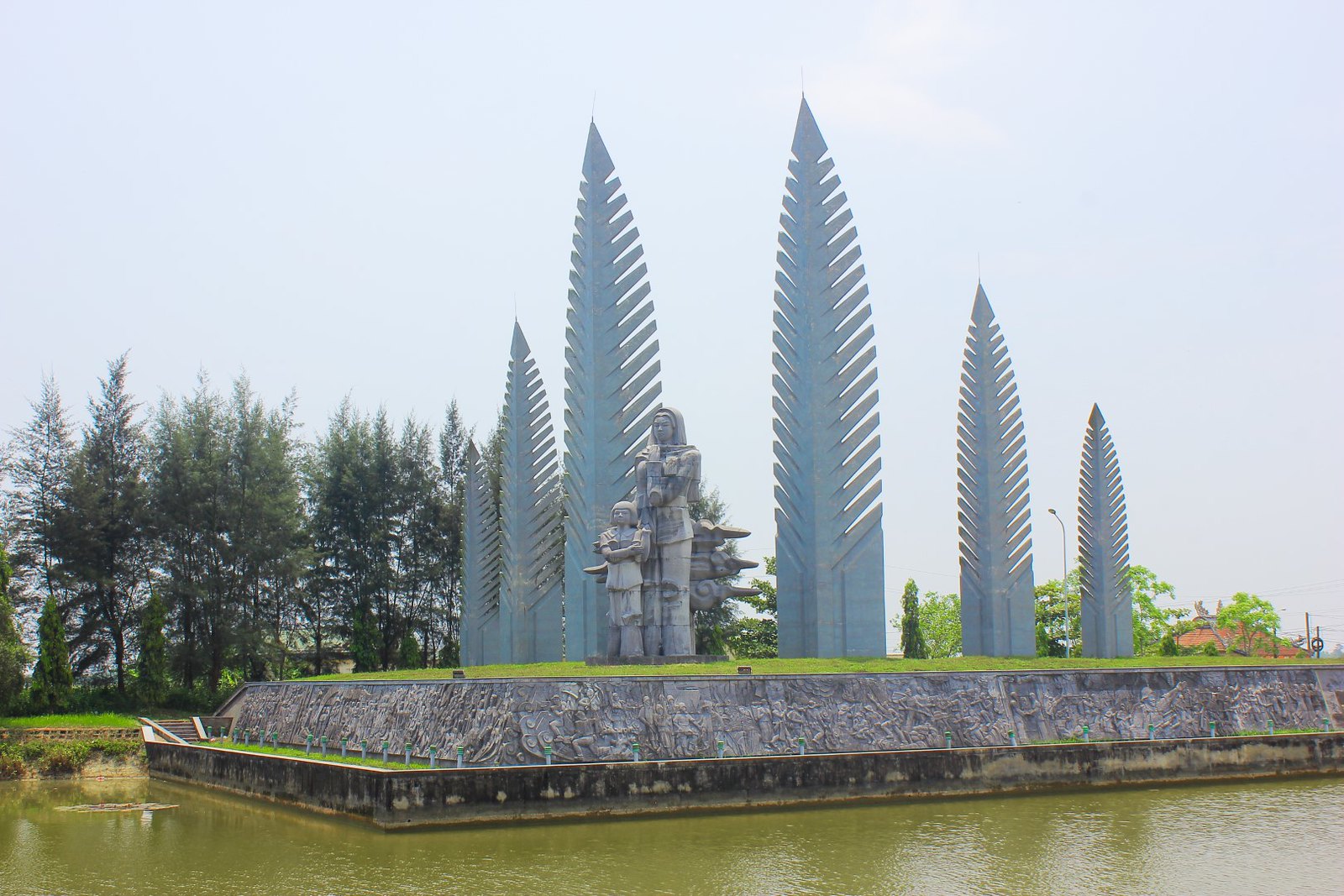
End of the path. Bank of the river. Ahead, a wooden bride emblazoned with scarlet and yellow flags of Vietnam. The instantly recognisable golden yellow star, centre of the sea of red. To our right, huge grey stone ‘feathers’ rise from green turf, sitting atop a landscaped platform. The platform was retained by a concrete relief depicting scenes of battle and victory. At the front of the stone feathers, stood a stone woman and child, looking hopefully and intently across the Ben Hai River, at the territory which fell to North Vietnam during the war. Hai explains the stone woman and her child are representative of the families of South Vietnamese soldiers left behind, and they stand waiting for their beloved to return home. It’s incredibly moving. A stunning reminder of the people left behind in times of conflict – a permanent reminder. The monument faces the Hien Luong Bridge – the wooden bridge which crosses the Ben Hai River. Hai says the river was once the border between the North and South of Vietnam, and both sides took turns to paint the bridge in different colours to incite the other. Nowadays, the south half of the bridge is yellow and the north is blue. In the middle of the bridge, exactly half way across the breadth of the river, a white line is painted on the floor boards. Feet either side, I snap a photo of this border. This is it. This thin white line.
We cross into northern territory. Here, more evidence of the propaganda war that raged here. Including more loud hailer speakers. Bigger ones… “The North, they also played propaganda across the river. Young women would read messages, saying Americans you are confused, don’t you miss your home? Don’t you miss your families? The most famous woman, they called her Hanoi Hannah!” Hai says, pointing up at the northern side’s towers. Oh, Hanoi Hannah – like the Good Morning Vietnam skit! Hai grins. On this side of the river, we slip into a small museum. There’s a gilded statue of Ho Chi Minh, and some small exhibits about the ‘Imperialist’ US troops, the guerrilla warfare tactics, and more about the weapons used. A glimpse of another narrative. Brisk tour of the museum then back in the car – onward to Vinh Moc.
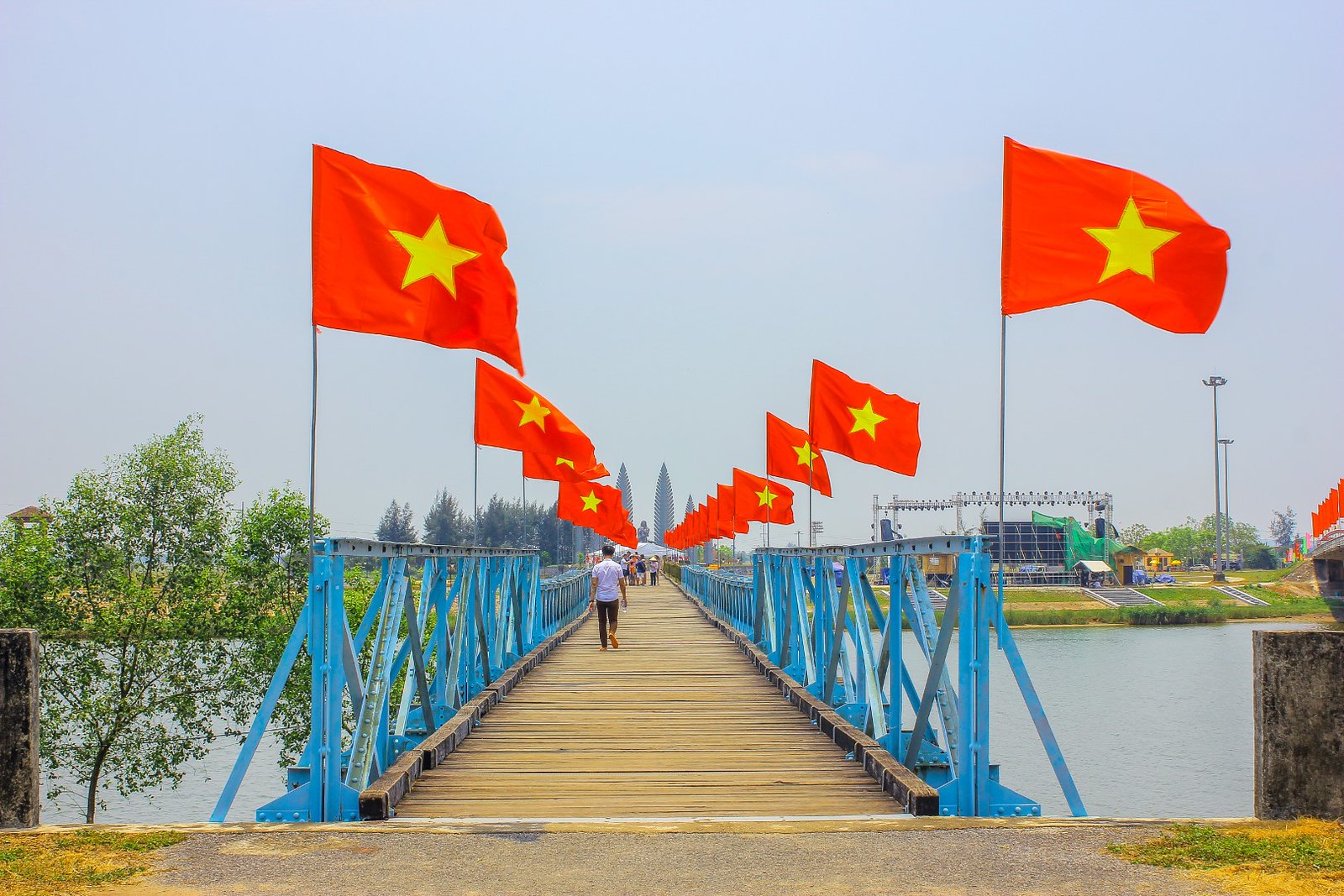
Head east, toward the coast. Hai tells us she is meeting with friends late this afternoon, at the beach for a party. She says they are school friends, and she hasn’t seen them in a long time. I can hear the glee in her voice. “We go to Vinh Moc, I promise!” she says. The scubby jungle turns to hot, dusty plantations. Papaya trees, bamboo and peppercorn. We careen through the fields on the skinny tarmac road.
Vinh Moc. The car drops us off at a boomgate – “he is going to park in the shade”, Hai assures us. There are small stalls set up beneath the shade of a coconut grove. A lady rocks a baby in a hammock strung between two trees. The stalls are packed with tables selling woven palm frond fans and fridges filled with cold drinks. Hai strikes up a conversation with one of the owners, and is suddenly swapping her platform sandals for thongs. Apparently where we’re going, you don’t need platform sandals. Hai flashes her shoe swapping friend a smile and we’re off. Down the path, through a bamboo grove. Hai points out an inconspicuous looking hole in the ground. Its a bomb crater. The more you look, the more you see. In fact the ground is littered with craters. Our trail weaves around them, one after the other. The ever present spectre of the war. Before we head underground, we stop in front of yet another collection of bomb casings. Again, grouped together like a strange and morbid family photograph. Tall ones, short ones and fat round ones. Hai speaks about the bombings slowly and I am acutely aware of the pain and trauma she must feel in a place like this. The US dropped a shocking number of bombs on this region – more than 9000 tonnes.

We continue. Hai, bless her socks, is busy telling us as many Vinh Moc tunnel facts as she can reel off in rapid succession. Including how deep the tunnels go. Shitting bricks. THIRTY METRES underground. Christ on a wheel. The difference between the Vinh Moc tunnels and the Cu Chi tunnels? I can stand up inside the Vinh Moc tunnels. The Cu Chi tunnels were dug in a hurry; they were shallow, small and haphazard. Here at Vinh Moc, these tunnels were excavated over time with incredible planning and oversight. Taller, wider, boarded and secured. Family rooms, kitchens, underground wells. An incredible network. An entire village moved underground to shelter from heavy artillery fire and lived here for years. Incredibly, there were even babies born beneath the surface! 17 of them, according to Hai.
Hai says the soil here is better for tunnel construction. That’s good. The only benefit I can so far determine is the temperature has plummeted. Its cool in the tunnels. I’m no longer frying like an egg in the bamboo grove. Hai guides us through the tunnel maze, using her phone as a light through the steps. She informs us on each level how deep beneath the surface we are, which does wonders for my mild claustrophobia. According to Hai, if we go deep enough and far enough, we will eventually appear on the coast above the sea. You can smell the sea air, gently flowing up the tunnel. And just when I think we can’t get any deeper, or darker, we pop out of the tunnels right on the beach. Exactly like Hai said we would. A perfectly framed doorway into the soil behind us, the South China Sea rolling onto yellow sand in front. Incredible.

Back in the car, and headed to Hue. Hai swapped her shoes back, and we bought drinks from her friend. Hai is visibly excited about her party, but continues to point out locations of interest as we drive. “The Ben Hai river again!” she says while we ride over a bridge. The river is deep green and dotted with fishing boats. Large wooden boats with colourful hulls and lines strung from the deck, even a hammock. They’re so close together you could walk across them like a wobbly boardwalk. Small round boats are clustered together, floating like inverted mushrooms on the water. Nets piled inside them and bobbing serenely near a jetty. Hai spins around, grinning, and explains that the driver will soon drop her at her party. She apologises for leaving us. “I have not seen my friends for such a long time”. We assure her its fine – we are stoked to see her making the most of the holidays. She promises the driver will take us back to the hotel, which we find hysterical. We ask how she will get back to town when the party is over, and she laughs, declaring she will call her son to pick her up. “We may be having a little drink, maybe some beers”, she giggles.
When she does leave us, she waves madly from the beachside party, still grinning. I’m left thinking about her about weeks and months later, marvelling at her energy and charisma. Her megawatt smile and cheeky sense of humour, the tongue-in-cheek way she spoke about propaganda and the Americans. And the way she started our tour, with her own story about the way her family sought safety and peace. I will never forget the funny, indomitable, smiling Hai.
Enjoying my Vietnam diaries? You can read the others here, or catch up on my Cambodian adventures!
